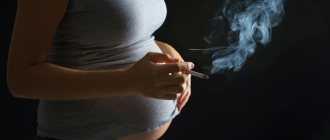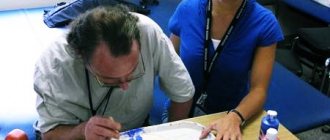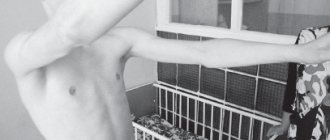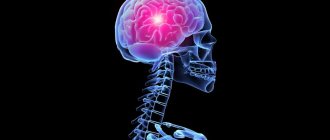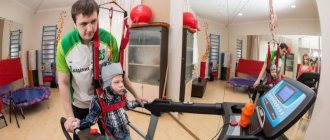Olga Tkatskaya
Games-activities for the development of fine motor skills in children with severe cerebral palsy
Games and activities are intended for teachers of inpatient social service institutions working with children with SMDD; parents.
The classes are aimed at developing fine motor skills in children with cerebral palsy .
The purpose of these games is to introduce teachers and parents to work on the development of motor skills , which ultimately affects the development of speech and thinking .
Fingers.
Progress of the lesson.
1. Massage the hands and fingers with walnuts.
Rolling one palm of the hand over the other from the back and inside, squeezing the nut in the palm with all fingers, rolling the nut between the fingers.
I'm rolling my nut
To become rounder than everyone else.
Dry sand games.
Pour dry sand into a container in a layer of 7–10 cm. Invite the child to play with the sand. Take sand in your hands, pour it through your fingers, and knead it with your fingers.
The child claps his palms on the sand, moves his fingers, sticks his fingers into the sand, “drowns”
hands in the sand.
We take a strainer from the kit and sow sand through it. We collect sand in containers and pour it out.
Then the teacher buries small toys in the sand and invites the child to find them.
3. Bottom line.
- How interesting it is to play with sand, did you like it?
Jars.
Goals.
1. Formation of manual skills in unscrewing and tightening the lids of jars.
2. Correction of hand-eye coordination based on practical actions with objects.
3. Cultivate patience.
Materials: 3-4 different jars of cosmetics with different items inside: button, pebble, nut, candy.
An approximate set of exercises for children with cerebral palsy at an early age
Stretching, special positions and styling.
Bend or straighten the limb, holding it in this position for at least 5-8 seconds, then stroke, knead and shake the tense muscles until they relax. Laying is done using bags of warm sand. You can do cryomassage of spasming muscles. The child is placed in a position opposite to that in which increased muscle tone (hypertonicity) occurs, and this leads to the fact that the pathological motor stereotype is gradually destroyed, the pathological afferentation from the receptor fields of the pathologically active reflex is reduced, and the regulation of muscle tone is normalized at rest and during voluntary movements.
When teaching everyday skills (self-care), activities such as drawing and writing are widely used; the child also develops the ability to hold a spoon, fork, pencil, toothbrush, wash his face, comb his hair, etc. The training includes walking on a flat surface, up stairs, and moving in a special wheelchair. The child develops the ability to stand between the bars (for this, parallel slats are installed at the level of the hip joints), to walk while overcoming obstacles (cubes, balls, sticks, and other objects are used in the form of obstacles). As for learning to walk, you should first massage the spastic muscles.
Also, exercise therapy for cerebral palsy should include exercises for coordination of movements, maintaining balance and normalizing mobility in the joints. Exercises are performed in various positions - standing, sitting, lying down. Exercises with moving on all fours and on your knees are also very useful; with their help, tonic reflexes are eliminated. This is an important stage in mastering the act of walking.
The development of coordination is promoted by exercises that involve the arms and legs. These exercises are performed in place and in motion, with eyes open and closed, as well as changing the rhythm and tempo of execution.
In the presence of muscle hypertonicity, the speed of movements and their coordination are sharply reduced. Therefore, before you start doing the exercises, you need to do a massage (cryomassage is possible), as well as vibration massage of the feet. When the time comes to begin the exercises, you should first perform simpler exercises at a slow pace, with a small number of repetitions. Then you should gradually complicate the exercises and speed up the rhythm of their implementation. Exercises are performed in place and in motion (for example, walking, running, etc.)
An approximate set of exercise therapy exercises for cerebral palsy, aimed at restoring impaired coordination of movements:
- I.P. - sitting on a chair. Take the ball lying on the floor, lift it above your head and lower it to the same place. Perform 3-5 times.
- I.P. - sitting on a chair, arms outstretched, holding a ball. Move your right hand with the ball to the side. Do the same in the other direction. Perform 3-5 times for each side.
- I.P. - sitting on a chair, arms with the ball extended above your head. Lower your hands with the ball forward. Do the same thing, only without the ball. Then move the hand with the ball to the side, and the other hand forward. Repeat 5-8 times.
- I.P. - sitting on a chair, legs straightened. Bend your right leg, while raising your left arm up. Do the same with the other leg and arm. Repeat 3-5 times.
- I.P. - standing, arms extended straight in front of you. Walk with your arms extended forward. Taking a step with your left foot, bend your right arm to your shoulder. Repeat the same with the other leg and arm. Perform 5-8 times.
Also, exercise therapy classes can include various dance exercises, balance exercises (for example, walking along a line drawn on the floor, walking on a gymnastic bench, walking between balls and clubs, etc.), you can conduct various relay races with balls, cubes, you can perform exercises with basketball elements (for example, throwing a ball into a basket).
In order to develop mobility of the spine, it is recommended to perform exercises using balls, a gymnastic stick, or against a gymnastic wall. In this case, you can move from one starting position to another: lie down - sit down, roll over from side to side, lean forward, sit down - lie down, etc.
Patients with cerebral palsy often cannot exhale fully enough. Therefore, this needs to be corrected from childhood, namely, to teach children to exhale longer. To do this, it is very useful to inflate toys, balls, you can inflate a volleyball chamber, and as you exhale you need to make sounds: a, oh, uh, eh, uh and others, especially this should be done while performing therapeutic gymnastics exercises. And if the patient has a speech disorder, then in this case the complex of therapeutic gymnastics is supplemented with exercises for the lips, tongue and facial muscles.
Progress of the lesson.
1. Massage of hands and fingers.
One, two, three, four (Children clench and unclench their fists.)
We washed the dishes. (Rub one palm against the other.)
Teapot, cup, ladle, spoon
And a big ladle. (Bend your fingers, starting with the big toe.)
We washed the dishes, (Again he rubs one palm against the other.)
We just broke the cup, (Bend the fingers, starting with the little finger.)
The ladle also fell apart ,
The teapot's nose is broken,
We broke the spoon a little. (Clench and unclench their fists.)
So we washed the dishes.
Goals.
1. Stimulation of kinesthetic sensations and development based on finger touch.
2. Correction of hand-eye coordination based on practical actions.
3. Cultivate interest in a new type of activity.
Materials: a container with warm water 15–20 cm high, small pebbles, shells, fish toys.
Balance exercises
Equilibrium, balance or maintaining a child’s pose in space is all the same. It all comes down to freely transferring body weight from foot to foot, from hand to hand, or from hand to foot and back. In every body position we must maintain balance - this is one of the most important and necessary human skills. You can develop it with many exercises and simulators. The most accessible and common exercise machine is a balancer, which is available in many options. In the form of a balancing board - on it you can, standing on all fours, swing left and right, or, turning the child, back and forth. Also on your feet. A balancer in the form of an inflatable disk - shifting from foot to foot, working with the feet, transferring body weight from toes to heels, etc. The main thing is to teach the child to work with the pelvis separately from the shoulders.
Progress of the lesson.
1. Massage of hands and fingers.
"Pickling cabbage"
We chop the cabbage, chop it, (With the edge of one hand we tap the back of the palm of the other hand.)
We three carrots, three, (Rub the bones of the bent fingers into the palm.)
And now we salt, salt, (Imitate sprinkling salt.)
We press well, we press. (Clench and unclench your fingers.)
2. Finger painting.
The teacher shows the child a pot with a flower.
- Look, the flower’s head is down. He's probably thirsty. I need to water the flower. But as? From a watering can.
The teacher takes a toy watering can and waters the indoor flower.
— Water flows from the watering can like rain. And in this picture the flower also drooped, lowered its head, probably no one had watered it for a long time. Let's draw rain in our picture, let the flower drink.
— Show me how the rain drips? Tap your palm with your finger.
Rain, rain,
Drip-drip-drip!
Wet paths.
We can't go for a walk -
We'll get our feet wet.
The teacher shows the child how to dip his finger in the paint and leave a mark on the paper. The child, under the guidance of the teacher, draws colored dots.
3. Bottom line.
Get younger! You drew rain and watered the flowers.
We play with cubes.
Goals.
1. Formation of the grasping function of the hand.
2. Correction of hand-eye coordination based on practical actions with objects.
3. Foster a sense of joy from joint activities.
Materials: small red and slightly blue building blocks, a toy car, a massage hair brush.
Sensory area
Education should alternate with rest, so a child with cerebral palsy needs a sensory zone - a place where the senses can be stimulated. Its contents and the choice of sensory stimulants depend on the child’s characteristics and preferences. For example, you can set up a dry ball pit, an aquarium, an easel, a music player, a lava lamp, or a sand painting table.
It would be somewhere
To renovate an apartment, you will first have to buy an apartment.
Or buy a fully furnished apartment and live right away. Both are available in the Airplane. View apartments
Progress of the lesson.
1. Massage of hands and fingers.
Doll Masha kneaded dough, (Clench and unclench her fists.)
She kneaded dough and baked cookies. (Clap with half-bent palms.)
She gave all the guests: (Curb your fingers, starting with the little finger.)
I gave it to the bunny, I gave it to the fox,
I gave it to the squirrel, I gave it to the bear,
And she drove away the evil wolf. (Wag your index finger.)
2. Exercise with salt dough.
The teacher places a larger piece of dough on the table.
- This is the dough the doll Masha kneaded. (Gives the dough to the child’s hands so that he can knead it.)
This is how the doll kneaded the dough.
Flatten the dough on the table with your palms, and then press it down with your fingers, making dots with your fingertips. Crumple again into a piece. The teacher divides the dough into three pieces, taking one for himself and the other for the child.
- We'll make cookies. Take a piece in your palm and roll the ball. Now press the ball with your palms. It turned out to be cookies. Now we will decorate it. Pinch off small pieces of dough from a piece of a different color. Roll small balls with your fingers and press them into the “cookies”
. From the remaining piece you can roll the sausage and make a ring. The teacher helps the child as needed.
3. Bottom line.
Did you like sculpting with dough? What did you make? Who will you treat with cookies? He will tell you: “Thank you!”
Sun.
Goals.
1. Formation of manual skills : attaching clothespins.
2. Correction of visual-auditory attention based on focusing on the speech and actions of an adult.
3. Cultivating a feeling of joy from a correctly completed task.
Equipment and materials: 6-7 clothespins, preparing a sun without rays.
Rest zone
If you have a choice, it is better to organize a relaxation area in a darkened part of the room. You can highlight the area with a calm color: choose dim wallpaper without a pattern, add soft lighting. There should be a night light near the bed that the child cannot drop, but can easily reach. A wall sconce with a switch on a string will do.
A sconce with a switch on a string for 1,300 rubles in Ikea, a wall lamp with a switch on a button for 800 rubles in Leroy Merlin and an LED night light with a remote control for 1,350 rubles in Leroy Merlin
The bed must be selected taking into account the child’s motor abilities:
- if the child sleeps restlessly or makes involuntary movements, bumpers are needed to prevent him from falling;
- for a child who uses a stroller, a bed with height adjustment is needed so that it is convenient to climb into it;
- Children who cannot move without support need a bed with adjustable backrest. If the bed has an electric drive, the child can change the position of his body himself - just press a button. Such beds are more expensive than mechanical ones;
- For children who cannot stand up, there are beds with toilet facilities.
For children with a mild form of cerebral palsy, a regular bed with an orthopedic mattress is suitable. It will help keep the spine in the correct position while sleeping.
1 - bed with an adjustable side for 22,000 rubles. Similar to a baby bed, but can accommodate a child up to 180 centimeters tall. 2 - functional bed with mechanical drive for 28,000 rubles. There is a pull-up bar and a tripod for the dropper. 3 - electric bed and toilet for 68,000 rubles. The height of the sides is adjusted manually, and the child can choose the position of the body himself - there is a control panel for this.
Progress of the lesson.
1. Massage of hands and fingers.
Exercise “Master made a locker”
.
The master made the cabinet, sawed the boards straight.
(Place your palm with an edge and “saw”
on the surface of the other palm.)
He hit them with a hammer, as if he were hammering nails.
(Clench your hand into a fist and lightly tap your palm and fingers.)
I made the doors.
(Connect the side surfaces of your thumbs, open and close the “doors”
.)
He couldn't make the key.
(Join the fingers of both hands into a “lock”
, thumbs together and hide them inside
the “lock”
.)
2. Exercise with a miracle bag.
The teacher shows the child the bag, lets him touch it and examine it.
- Now we will hide various objects in the bag.
The child takes one object at a time, names it and puts it in a bag, the teacher helps.
— This is a massage ball, it is small and prickly. This is a bunny, he is soft, fluffy and warm. This is a spoon, it is smooth and cold. This is a cube, it has corners.
- All the items were hidden in the bag, they are now invisible. (The teacher shakes the bag.)
Place your pen in the bag and find the ball in it.
The child feels the object, tries to recognize it and takes it out. The teacher approves of him with praise. And so are all objects.
3. Bottom line.
— Did you like playing with the bag? Was it difficult to find items in the bag? Well done, you tried and found all the items correctly.
Lesson 14. House for bunnies.
Goals.
1. Develop motor reactions (clap your hands, tilt your head to the sides)
.
2. Correction of fine motor skills based on verbal instructions and demonstration by an adult.
3. Cultivate friendly relationships between a child and an adult.
Equipment: a toy hare, a recording of a dance melody, 2 cubes and a triangular prism from a building set, a lock.
Motor correction of cerebral palsy
is aimed at improving and correcting existing functions, such as: incorrect grip of the hand, incorrect gait, lack of coordination when walking, hyperkinesis during tension during the implementation of any motor functionality. Correction of motor disorders in children with cerebral palsy is carried out in two ways: individually and in group classes. Exercise therapy for children with cerebral palsy is compiled individually, and massage and speech therapy sessions are also provided individually. Group classes are aimed at socializing children.
The medical clinic accepts patients from all regions of the country: Moscow, St. Petersburg, Yekaterinburg, Chelyabinsk, Novosibirsk, Ufa, Kazan and others.
Useful articles:
- Meltdown in autism and how to cope with it
- Teaching reading to children with autism
- Forms of autism



